The Social Security Administration (SSA) is an independent agency of the federal government. It was created in 1935 as an important part of Franklin D. Roosevelt's New Deal program. See more...
At the beginning of FY 2007 when the concern over rising backlogs led the SSA to undertake a broad effort designed to improve the agency's functioning, the appeals of 715,568 individuals were then pending before what is arguably the largest court system in the world.
Four years later, in March of 2011, the commissioner testified again, emphasizing the recent accomplishments of the SSA. "We reversed many negative trends," he said, "most notably with the hearings backlog, and significantly improved service and stewardship efforts."
On June 6, 2011, more than a year after TRAC had started studying the operations of the Social Security Administration, TRAC sent the SSA a one-page summary of our proposed key findings and asked the agency for their comments. While the SSA acknowledged receipt of the findings, the agency never provided any response. See more...
In particular, the data show that while progress had initially been made, the hoped for reduction in backlogged matters ground to a halt in the last 12 months. Since then the number of pending cases grew by 5 percent. More success has been achieved in reducing average wait times.
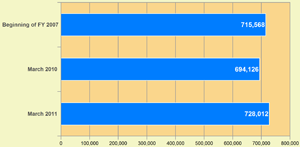
Figure 1. SSA Disability Court Case Backlog. Click for larger image. |
In addition to documenting the recent overall surge in the number of pending matters, TRAC's analysis also found sharp variations in the growth and decline in backlogs depending on where the claimants live. In the last 12 months, for example, the change in state-by-state pending case backlogs varied from an increase of 86 percent in Nevada to a decline of 25 percent in Connecticut. The reasons why some states were up and others were down sometimes were hard to discern, with Iowa experiencing a 23.5 percent increase, while next door in Nebraska the backlog dropped by 14.8 percent. Table 1 shows the 10 states with the largest backlog growth and the 10 states with the largest declines over the last 12 months. Details for every state can be obtained from the interactive "app" accompanying this report.
|
Table 1.
Changes in Case Backlogs by State* (March 2010 versus March 2011)
* Excludes National Hearing Centers
|
||||||||||||||||||||||||||||||||||||||||||||||||||||||||||||||||||||||||||||
The changes in the state by state backlog counts can be attributed to a number of different forces. One factor, of course, is the total of new appeals filed in each jurisdiction. Another concerns the number of administrative law judges (ALJs) the SSA has assigned to each state. In addition, however, are the numerous executive decisions to transfer appeals from one location to another. These transfers are one of several new strategies the SSA has adopted to reduce the very long hearing wait times by redistributing the workload. (To make these transfers possible, matters are now often decided by video hearings.)
The extent that appeals are now subject to being transferred out of the office where they originated is demonstrated by the fact that in FY 2010 the volume of transfer activity was equivalent to almost half of the number of new appeals that were filed that same year (see Table 2). About a quarter of these are transfers to national and regional screening centers. About one in ten are transfers to the National Hearing Center (NHC) system which was set up to handle cases from the badly backlogged districts. An additional 4 percent were transfers to newly opened hearing offices, while the remaining 62 percent were transfers to existing hearing office locales.
|
Table 2. Transfer Activity Relative
to Appeals Received, FY 2010
|
Thus, the growth or reduction in state-by-state backlogs is not only driven by the volume of the appeals filed by the residents of those states. Also important are the decisions by SSA administrators to try to deal with the varying number of pending matters in this or that location by simply ordering that a portion of them be transferred to another office. Details on the volume of transfers sent and received by each hearing office last year are provided here. Most of the states that made the top 10 list for the greatest reduction in backlog during the last 12 months had been a net exporter of workload to other offices.
Other things being equal, the growth in a hearing office's backlog is an early indicator that the growing competition for hearing dates and an available administrative law judge will, down the road, slow the the whole process in that office. A later section in this report examines to what extent SSA administrators have been successful using a variety of measures, including transfers as well as video conferencing, to bring down disparities among hearing offices in the speed with which cases are resolved. You can examine trends in both pending caseloads and average disposition times by region, state, and by each of the 162 separate court hearing offices in the accompanying app.
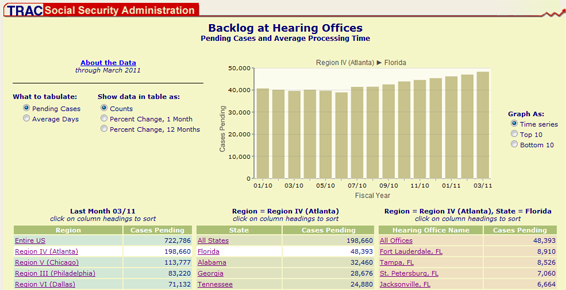
Figure 2. TRAC's Social Security Administration Case Backlog Tool. (click to use the tool) |
Magnitude of Social Security Disability Insurance Programs
The disability appeals backlogged before the SSA's 1,396 administrative law judges arise out of long established federal entitlement and safety net programs. Depending on their situations, workers who have become disabled and unable to work (and their dependents) can collect money under the Disability Insurance (DI) or Supplemental Security Income (SSI) provisions administered by the Social Security Administration (SSA). Under these programs, according to recent reports, the SSA said that in FY 2010 about 17.8 million individuals were receiving disability payments. Federal expenditures for the programs last year were over $170 billion.
Critically important in the discussion of the growing entitlement crisis is the fact that the Disability Insurance Trust Fund — supported by a portion of social security payroll taxes — started running a deficit in FY 2005 and is now projected to totally exhaust its fund in 2018. This is two decades before the regular Social Security Trust Fund is expected to run out. Equally important is the fact that while the number of social security recipients has risen by 13 percent in the past decade, individuals receiving DI disability benefits has shot up by 53 percent, and those under SSI have increased by 21 percent (see Table 3).
|
Table 3.
Growth in Social Security and
Supplemental Security Income Programs.
* supported by social security payroll taxes;
** not insurance - supported by general taxes (SSI 2010 projected based upon 2009 actual). |
||||||||||||||||||||||
An introductory SSA brochure that is now provided to all new applicants explains the goal of the program in very simple language: provide benefits "to people who cannot work because they have a medical condition that is expected to last at least one year or result in death." The brochure notes in passing that the chances of becoming disabled — and thus being eligible for possible benefits — are much greater than generally recognized. "Studies show that a 20-year old worker has a 3-in-10 chance of becoming disabled before reaching retirement age."
Buried under the avalanche of hard-to-comprehend statistics — more than 3 million new disability applicants last year, more than 700,000 of them in 2011 awaiting a hearing on the question of their eligibility — is a hard reality. Every day, thousands upon thousands of disabled and dying individuals wait for months and sometimes years at the hands of an often conflicted, imperfectly organized and underfunded agency before they receive the benefits that in principle are available to them under the law.
In a court as large as that operated by the SSA it is hardly surprising that individual problem cases are constantly floating up to the surface. In late May, for example, David B. Daugherty — a judge based in Huntington, West Virginia — was placed on administrative leave after the Wall Street Journal published a report stating that in the first six months of FY 2011, Judge Daugherty had awarded benefits in every one of his 729 cases.
Meanwhile, on April 12, a group of disabled individuals seeking disability insurance in Queens — with the help of pro bono lawyers and the Urban Justice Center in New York — filed a class action suit against five out of the eight judges in Queens. The plaintiffs said the systematic failures of the judges had caused them injury and denied them the right to a full and fair hearing before an impartial adjudicator in violation of the due process clause of the Fifth Amendment, the Social Security Act and the Administrative Procedures Act. (While it is not completely unusual for the work of a single ALJ to be challenged in court, the attorneys said they believe this is the first class action suit brought against multiple ALJs in a single office.)
It further should be noted that in trying to control the backlog, regular SSA audits to make sure that a disabled person is still qualified have fallen behind.
Trying to Deal with the Backlog
The SSA's 2007 improvement plan is just the latest in a series of backlog reduction attempts. Historically, new disability appeals have fluctuated up and down. And from time to time, the inability of the Social Security courts to keep up with their workload during an upswing in receipts has resulted in a new effort to better handle the incoming appeals. Each new "reform" might initially succeed in getting backlogs under control, only to have them start shooting back up again as soon as receipts again headed upward.
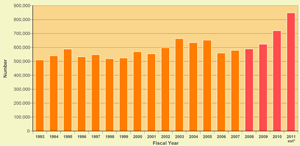
Figure 3. Disability Appeals Received and Cases Pending. Click for larger image. |
For example, there was a previous reform effort in the nineties as backlogs climbed. Measures invoked then (as well as falling receipts) helped bring the backlog down, but only temporarily. The latest backlog buildup as well as the earlier one can be clearly seen in the annual trends covering the period of FY 1993 - FY 2011. Figure 3 shows the fluctuation in receipts, while Figure 4 displays the parallel trends in backlogs. The numbers behind both figures can be found in this supporting table.
It was the menacing growth in disability backlogs that began in FY 2000 — documented in the agency's annual reports and regularly tracked in a series of detailed reports from the Government Accountability Office (GAO) — that prompted the SSA in 2007 to develop and launch yet another far-reaching plan to improve the timeliness and fairness of these unique courts.
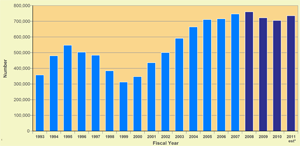
Figure 4. Disability Appeals Received and Cases Pending. Click for larger image. |
The objective the agency settled on this time was not simply the reduction in backlog but also a promise to prevent its recurrence. In 2007 it set a goal of permanent elimination of the "backlog" by 2012, modified during 2008 to eliminating it by 2013. Up until May 2007, a "backlog" had been defined as anything over 300,000 pending cases. Then the SSA's definition was changed and the agency said it would consider the backlog eliminated when the pending cases were brought down to 400,000. In September 2008, the backlog elimination target was raised again to 466,000. For discussion of rationale see GAO report.
In a press release accompanying the Commissioner's 2010 congressional testimony, the Commissioner was quoted as saying "our backlog reduction plan is working" and that he was confident the number of pending hearings "will continue to diminish." A chart (reproduced here as Figure 5) accompanying the Commissioner's testimony also offered an optimistic projection for meeting the agency's target of bringing pending cases down to 466,000 by FY 2013.
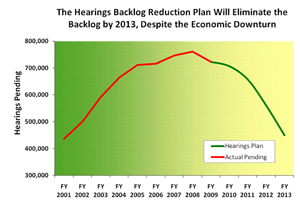
Figure 5. Social Security Testimony Before Congress. Click for larger image. |
Now a year later, as seen in earlier Figures 1 and 4, backlogs are again on the rise — up 5 percent in the last 12 months. The agency's trend projections unfortunately turned out to be totally off mark.
While the changes outlined in the SSA's 2007 plan have failed to deal with the backlogs, the efforts did succeed in increasing the volume of dispositions. But this was not enough to keep up with the rise in disability appeals. And the agency has not been quick to acknowledge it was again facing a growing backlog. Indeed, now in the ninth month of the current fiscal year the agency's website still is projecting a rosy scenario for FY 2011 with dispositions exceeding receipts, despite the juxtaposition of actual numbers showing quite the reverse (see Table 4).
|
Table 4. SSA Actual vs Projected Receipts vs Dispositions, FY 2011.
*Source: http://www.ssa.gov/appeals/ (as of June 15, 2011)
|
Other Results of Reform Efforts
Not surprisingly, the most important factor behind the increase in dispositions was the decision of Congress to increase SSA's budget so that it could hire more administrative law judges and support staff, as well as to fund overtime pay to ramp up case processing. As a result, fulltime ALJs on SSA's payroll have jumped by one-third from 1,073 in FY 2007 to 1,431 at the end of December 2010, and then fell slightly to 1,396 in March 2011. Annual numbers of fulltime ALJs on the payroll are shown in Figure 6; see also supporting detail.
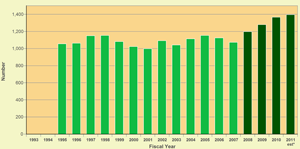
Figure 6. Fulltime Administrative Law Judges Click for larger image. |
In addition, the SSA has adopted several measures to reduce the workload reaching these administrative judges. New appeals were screened and those thought amenable were disposed of by other support staff, including senior attorney adjudicators. By FY 2010, as a result of these and other initiatives, nearly one out of every fourteen dispositions (7.3 percent) occurred without being heard by the ALJs — reportedly accounting for about 54,000 out of the court's nearly 738,000 dispositions last year.
Under the plan, a number of other new management initiatives were undertaken, including one to encourage the ALJ's to close out the oldest cases in the pending workload, During FY 2007, for example, a concerted effort was made to deal with those cases that had been awaiting disposition for 1000 or more days. During FY 2008, the focus was on closing out cases that were 900 days or older, and by FY 2011 the SSA courts were focusing attention on cases that were 775 days or older.
By focusing on the oldest cases in the backlog, and the adoption of several other approaches including case transfers and video-conferencing, the agency reports that average wait times have been significantly reduced in the last few years. During FY 2008 agency figures indicate wait times peaked at an average of 514 days for cases disposed of that year. During the first half of FY 2011, initial reports indicated this had fallen to 369 days. This was 28 percent lower than the peak, but still higher than levels that prevailed previous to the buildup in the backlog of around 300 days (see Figure 7 and supporting table).
These gains, however, are threatened by the recent growing backlogs. History shows that if this growth is unchecked, as hearing dockets become more and more clogged, wait times will grow.
Recent Trends by Court Hearing Office
While the reduction in recorded average processing times has been significant, these national averages conceal widely varying situations in different hearing offices.

Figure 7. Average Days to Process Appeal Click for larger image. |
In cases disposed of during March 2010, three and a half years after the agency launched its initiatives, average processing times still ranged between 251 days in Middlesboro, Kentucky to 643 days in Anchorage, Alaska. This was a difference in average times between the slowest and fastest offices of 392 days.
Currently, the variability in processing times across hearing offices is only slightly improved. For cases disposed of during March 2011, the extreme differential between the slowest and the fastest offices had been reduced from 392 days to 373 days. Thus, a persistent differential exists in the experience an applicant has depending upon which office his or her case was heard in. As shown in Figure 8, times varied between 162 average days in Shreveport, Louisiana to an average of 535 days in Dayton, Ohio.
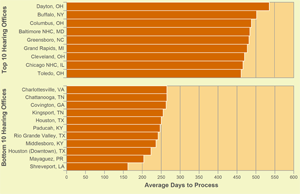
Figure 8. Average Days to Process Appeal for Cases Closed in March 2011. Click for larger image. |
Moreover, the current processing times in an office may not be a good indicator of future processing times. As noted earlier, individual offices vary widely in whether their backlogs are increasing or decreasing. This could impact future processing times. A possible harbinger of this is how much in fact average processing times did change over the past 12 months. For example, the National Hearing Center in Baltimore, Maryland experienced a 42.1 percent increase in processing times between cases closed in March 2010 and those closed during March 2011. San Juan, Puerto Rico's average processing time increased by 44.5 percent during the same period, Huntington, West Virginia increased by 25.9 percent and the times for the office in San Jose California increased by 17.0 percent.
At the other extreme, each of these hearing offices experienced at least a 40 percent or better improvement in their hearing times over the past 12 months: Atlanta North, Georgia; Houston (Downtown), Texas; Chattanooga, Tennessee; Mayaguez, Puerto Rico; Oak Park, Michigan; Madison, Wisconsin; Charleston, South Carolina and Shreveport, Louisiana.
The accompanying app to this report lets you view these and additional recent trends in each of the 10 SSA regions, the National Hearing Office, the 50 states, and the 162 court hearing offices.
Conclusion
Because of the great size and real complexity of the SSA and its multiple programs, informed oversight of this behemoth is a challenge for public interest groups, university experts, reporters and even Congressional committees. This report is the first of two reports to provide more information about this important agency and how it is actually functioning.